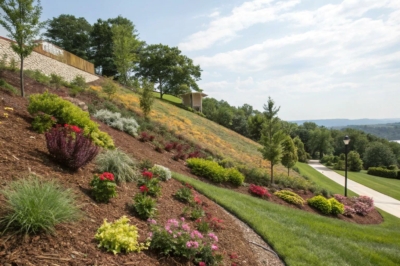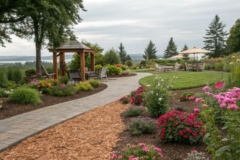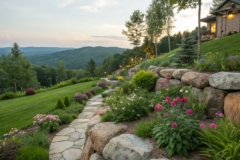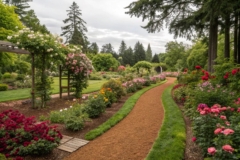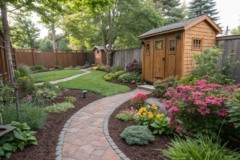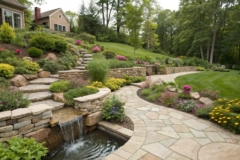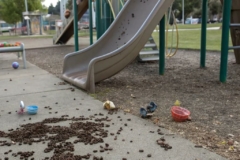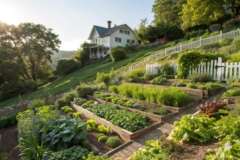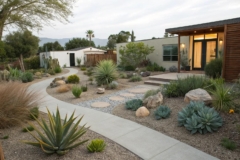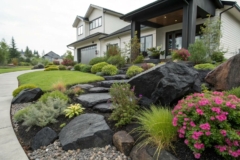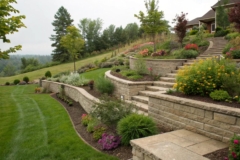1. Layered Planting for Depth
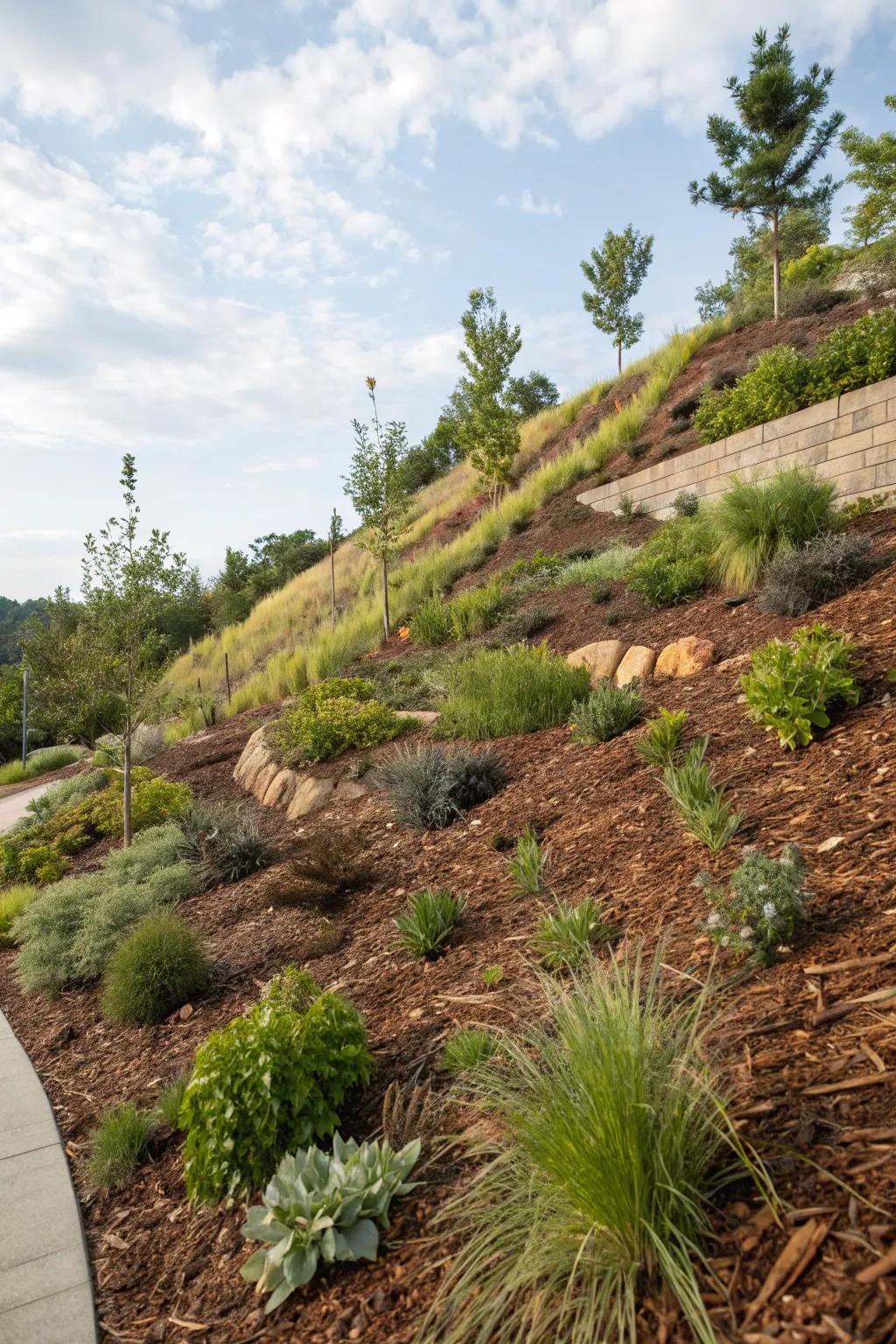
Creating layers with plants of varying heights adds depth and visual interest to a hillside. In my garden, I love using tall shrubs in the back and creeping plants in the front.
Some ideas to consider:
- Tall Garden Shrubs: Enhance your garden’s backdrop with tall shrubs for added depth and visual appeal.
- Creeping Ground Cover Plants: Create lush front layers with creeping plants for seamless hillside coverage.
- Mulch for Hillside Gardens: Retain moisture and suppress weeds with quality mulch designed for sloped gardens.
2. Embrace the Wild with Native Plants

Using native plants is a fantastic way to keep your hillside looking lush and vibrant. They require less maintenance and blend seamlessly with the natural landscape, just like in my own backyard.
Items that may come in handy:
- Native Plant Seed Mix: Enhance your garden’s beauty with easy-to-grow native plant seeds. Create a thriving natural habitat.
- Natural Mulch for Slopes: Protect your hillside garden with natural mulch. Help preserve moisture and prevent erosion effectively.
- Organic Fertilizer for Native Plants: Boost your native plants’ growth with organic fertilizer. Ensure lush, vibrant foliage and blooms.
3. Incorporate a Water Feature
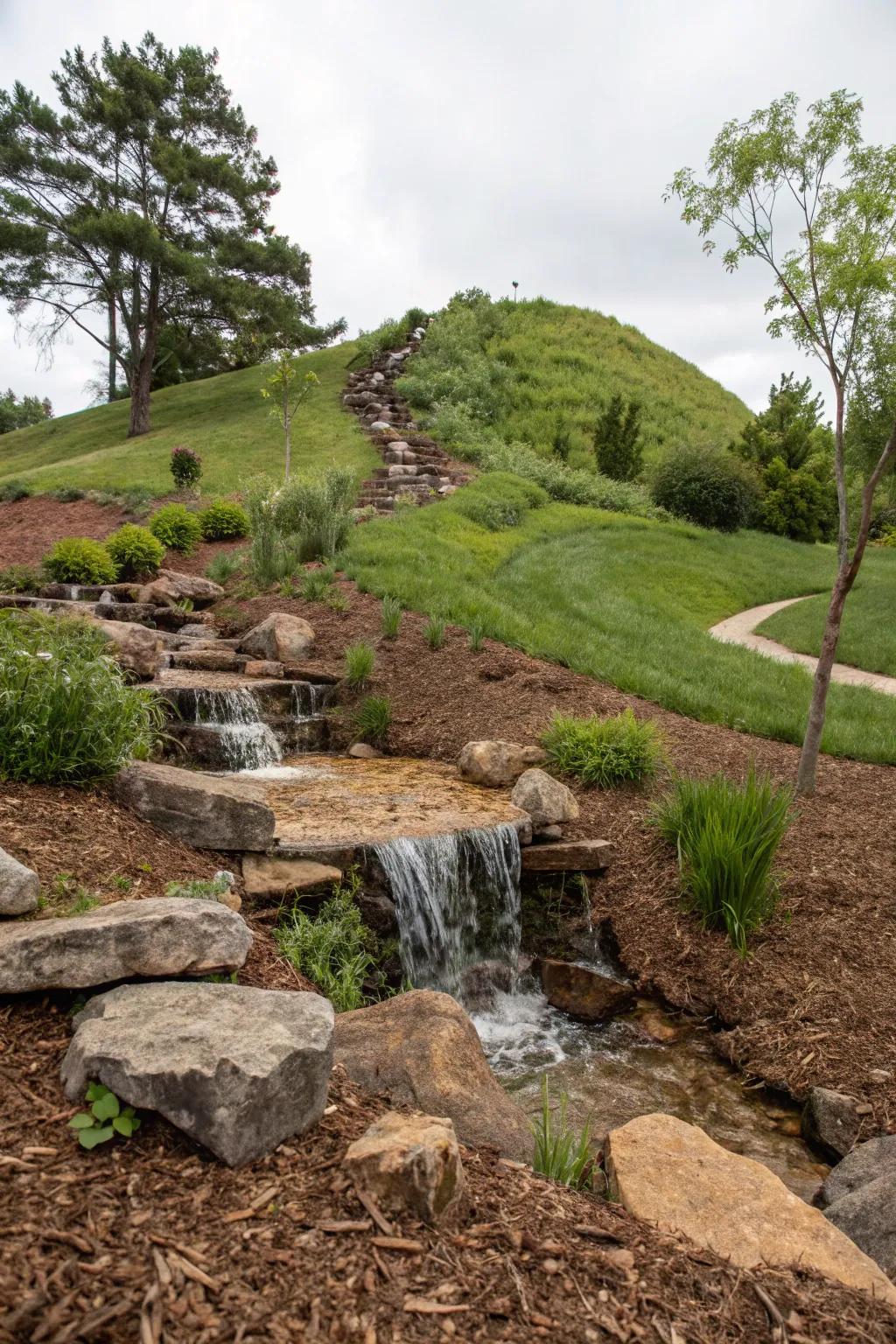
Adding a water feature like a small waterfall can be a stunning focal point on a hillside. It’s a bit of a challenge, but the soothing sound of water is worth the effort.
Give these a look:
- Outdoor Waterfall Kit: Create a stunning hillside water feature with ease. Enhance your landscape with tranquil sights.
- Solar Water Pump with Battery Backup: Keep your waterfall running efficiently. Utilize sustainable solar power for continuous water flow.
- Garden Pond Liners: Ensure a leak-free water feature with durable liners. Protect your landscape with quality materials.
4. Terracing with Timber
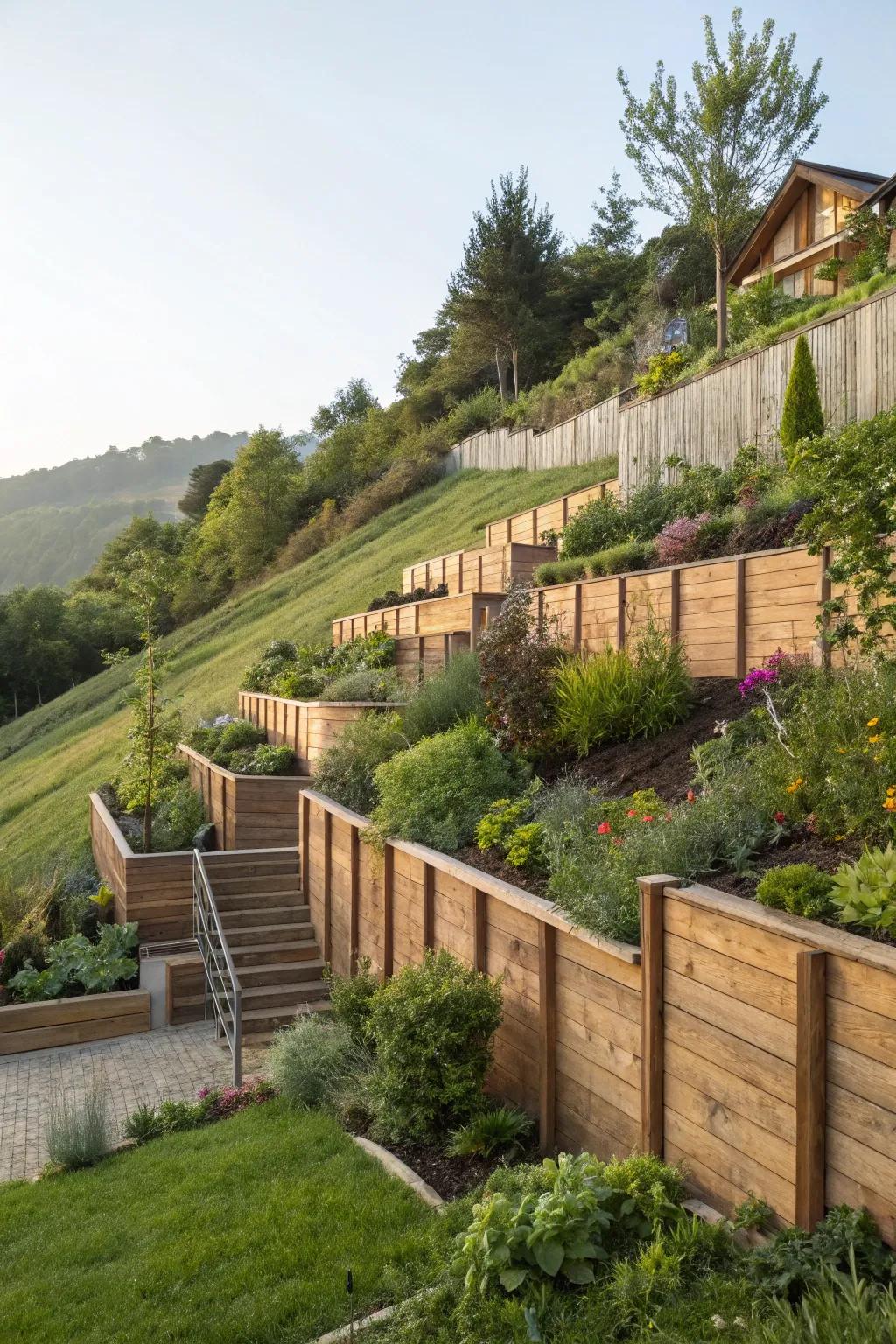
One of my favorite ways to tackle a steep hillside is by creating terraces with timber. These not only provide stability but also create charming, layered levels where you can plant to your heart’s content.
Might be a good match:
- Landscape Timber: Enhance your hillside with durable landscape timber, perfect for building robust terraces.
- Garden Edging Kit: Define your terraced beds beautifully with a versatile garden edging kit for a polished look.
- Soil Retention Fabric: Ensure soil stability on your terraces with high-quality soil retention fabric.
5. Use Boulders for Impact
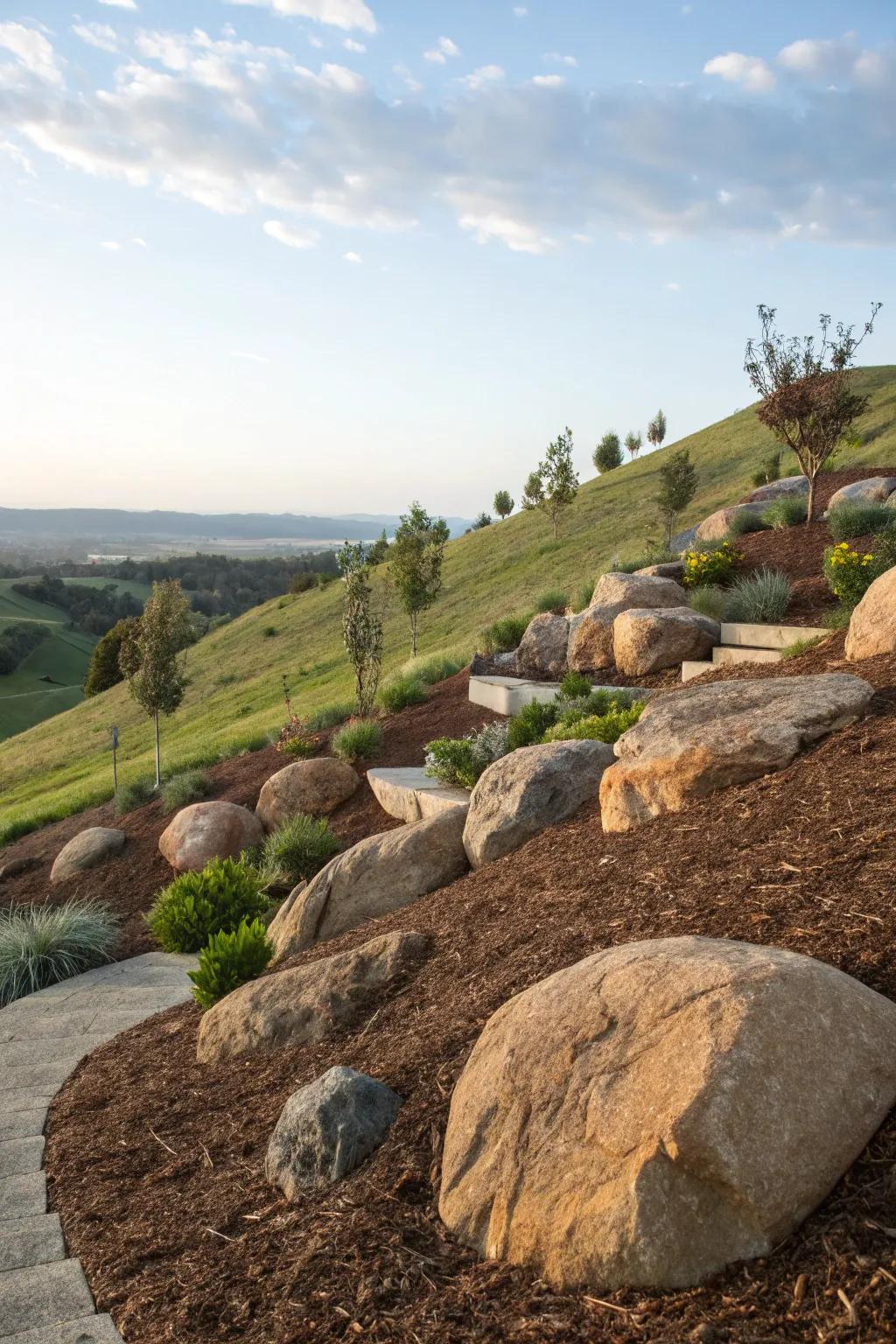
Large boulders can add dramatic impact and help stabilize your hillside. I’ve used them to create natural seating areas and focal points in my garden.
Explore these options:
- Decorative Garden Boulders: Enhance your hillside with durable boulders, perfect for creating natural seating or focal points.
- Landscape Fabric Roll: Stabilize soil erosion on your hillside by installing effective landscape fabric beneath boulders.
- Outdoor LED Spotlights: Highlight your boulders and enhance the evening ambiance with energy-efficient outdoor LED spotlights.
6. Low Maintenance is Key
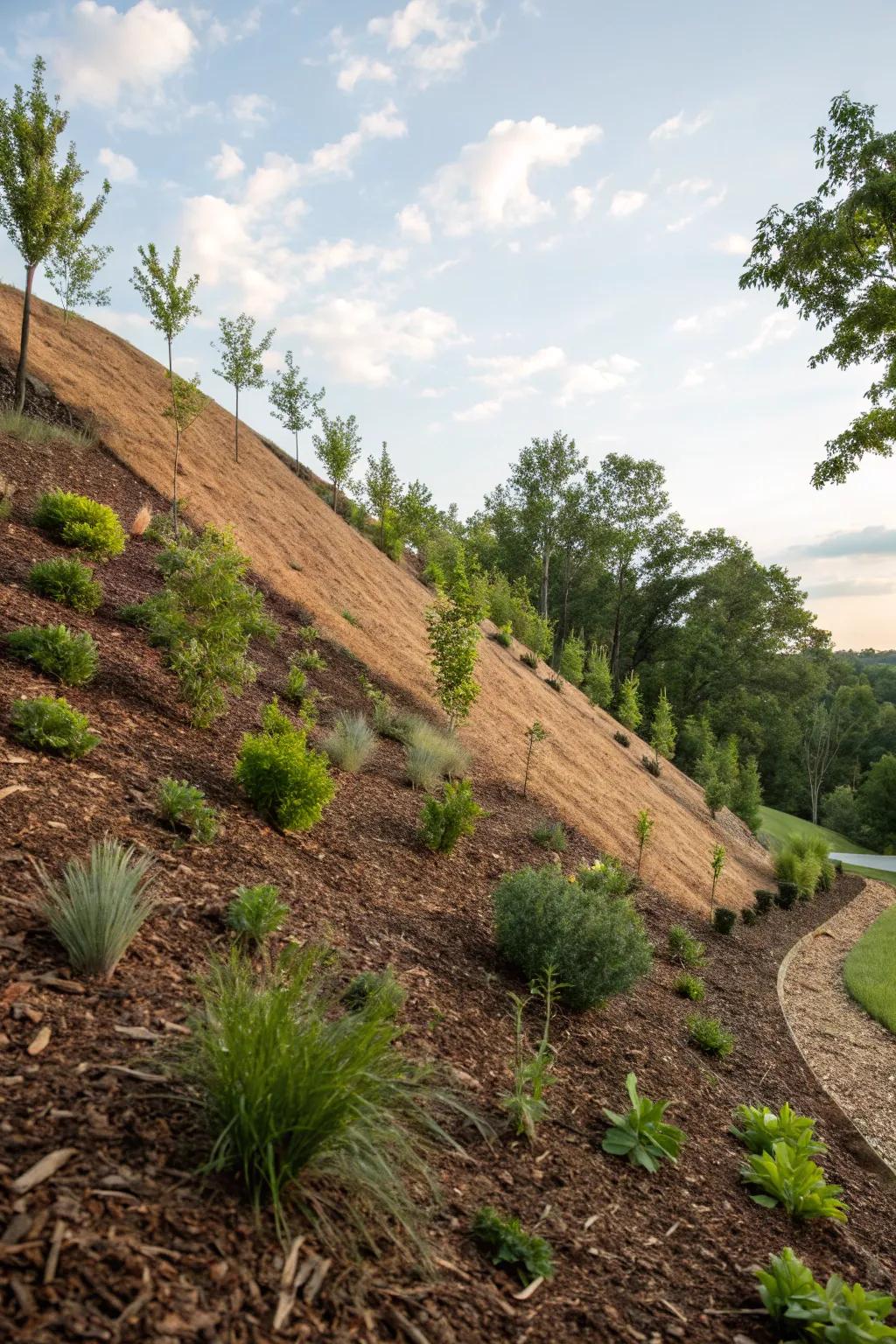
Opting for low maintenance solutions on your hillside means more time to relax and enjoy the view. I recommend hardy plants and durable mulch that require minimal upkeep.
Consider these options:
- Hardy Ground Cover Plants: Enhance your hillside with hardy ground cover plants for minimal maintenance and vibrant beauty.
- Durable Mulch: Use durable mulch to reduce soil erosion and minimize upkeep on your hillside landscape.
- Landscape Fabric: Install landscape fabric to effectively control weeds and maintain a pristine hillside view effortlessly.
7. Focus on Erosion Control

Strategically placed mulch and plants are key to erosion control on a hillside. I’ve learned that planting dense ground cover and using mulch helps keep the soil in place during heavy rains.
A few things you might like:
- Organic Mulch for Landscapes: Secure your hillside soil with eco-friendly mulch, preventing erosion during heavy rains. Shop now!
- Drought-Resistant Ground Cover Plants: Enhance hillside stability with these hardy ground covers. Perfect for erosion control. Buy today!
- Erosion Control Fabric: Lay down erosion control fabric for extra stability on slopes. Easy installation. Order yours now!
8. Enhance with Lighting
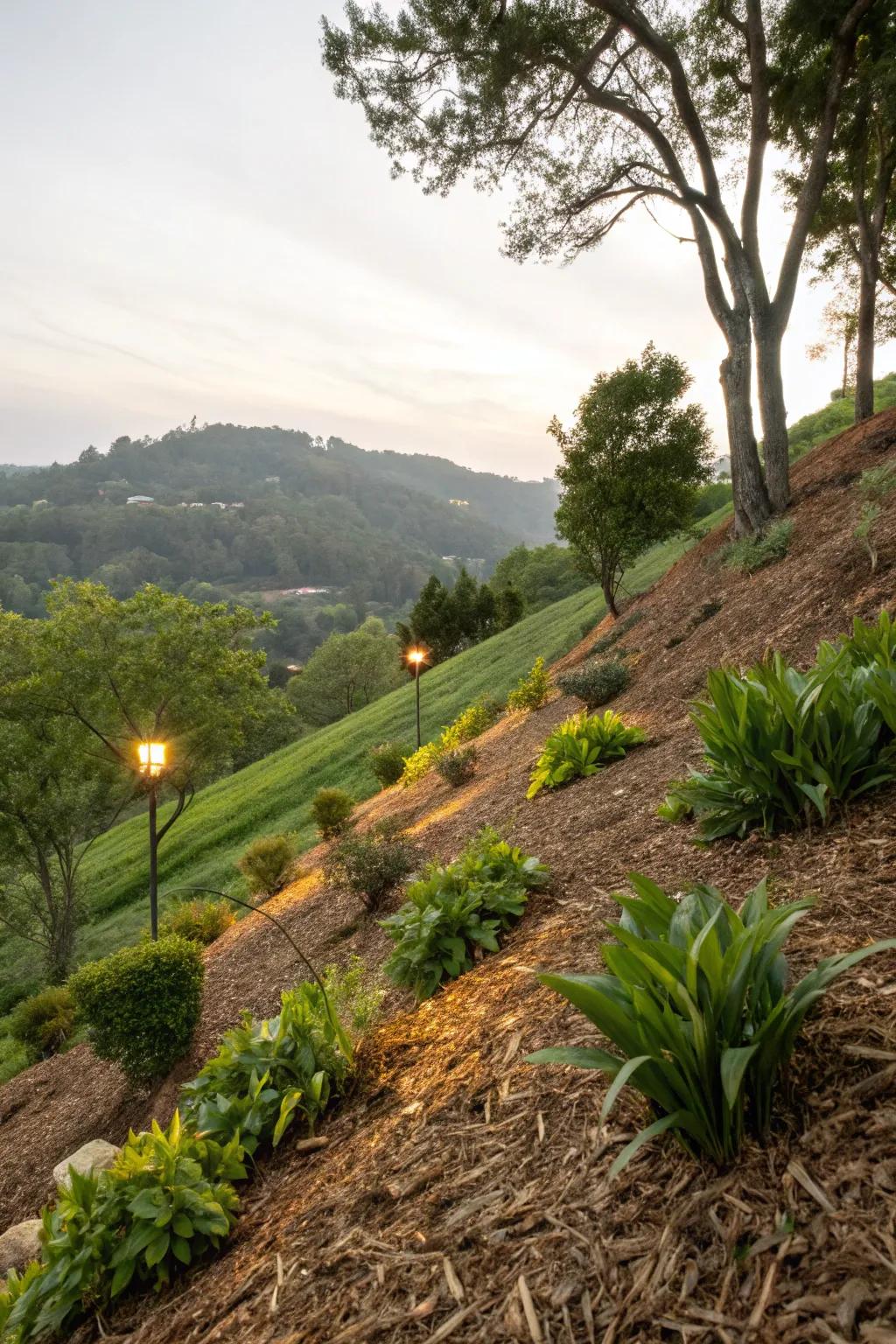
Strategic lighting can highlight your hillside’s best features and create a magical atmosphere at night. Solar lights are a fantastic, eco-friendly option I’ve used in my own garden.
You might give these a try:
- Solar Pathway Lights: Illuminate your hillside paths effortlessly, adding safety and beauty with eco-friendly solar pathway lights.
- LED Spotlights: Highlight your garden’s stunning features with adjustable and energy-efficient LED spotlights for dramatic effects.
- Outdoor String Lights: Create a warm ambiance on your hillside with charming, weather-resistant outdoor string lights.
9. Mix Mulch Materials

Why stick to one type of mulch when you can mix a few? Combining bark mulch with gravel or wood chips adds texture and interest to your hillside, something I’ve experimented with to great effect.
Possibly helpful picks:
- Natural Bark Mulch: Enhance your hillside garden with natural bark mulch for improved moisture retention and aesthetics.
- Decorative Gravel Stones: Add decorative gravel stones for texture and to prevent weed growth in your hillside garden.
- Natural Wood Chips: Incorporate wood chips into your garden design for sustainable, earthy texture and visual interest.
10. Create Pathways with Pizzazz
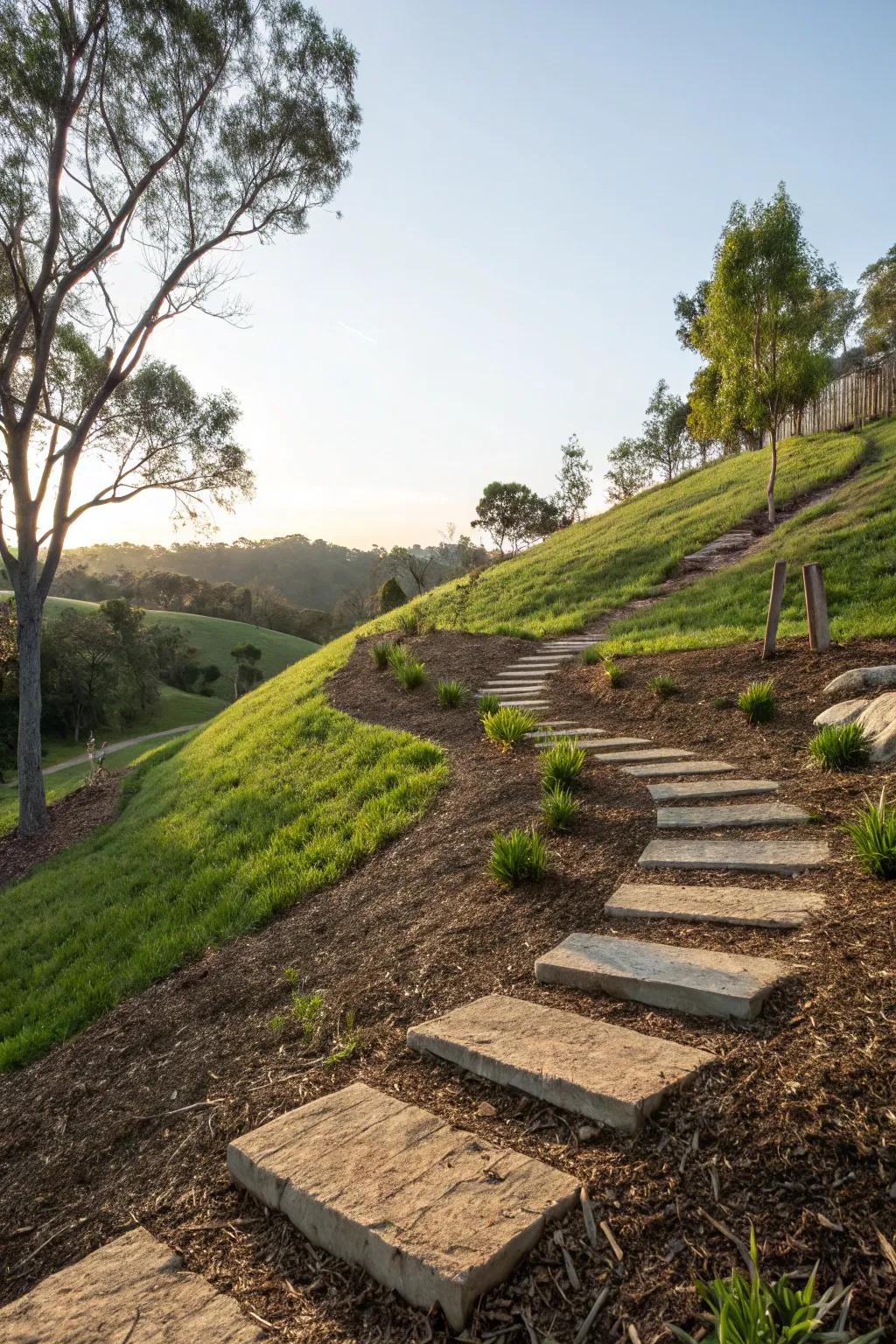
Adding defined pathways with stepping stones or gravel can make navigating your hillside a breeze. It’s practical and adds a touch of elegance, just like the paths winding through my garden.
You might like:
- Garden Stepping Stones: Add charm and functionality to your hillside with stylish stepping stones. Beautify your pathway now!
- Gravel for Landscaping: Enhance your hillside paths’ elegance and utility with quality gravel. Create a stunning path today!
- Solar Pathway Lights: Illuminate your garden pathways with solar lights. Enhance safety and ambiance effortlessly
11. Rock It with Stone Edging

Adding stone edging to your hillside can give it a polished look while helping to hold the mulch in place. I’ve found that a mix of large and small stones works best for both function and aesthetics.
Check these products out:
- Natural Stone Edging Set: Enhance your hillside’s beauty with durable stone edging. Achieve a polished and cohesive look.
- Garden Landscape Stones: Create a striking boundary with varied size stones for function and appeal. Start landscaping today.
- Heavy-Duty Mulch Fabric: Prevent weed growth and secure mulch with reliable mulch fabric, enhancing hillside durability.
12. Add Color with Flowering Plants
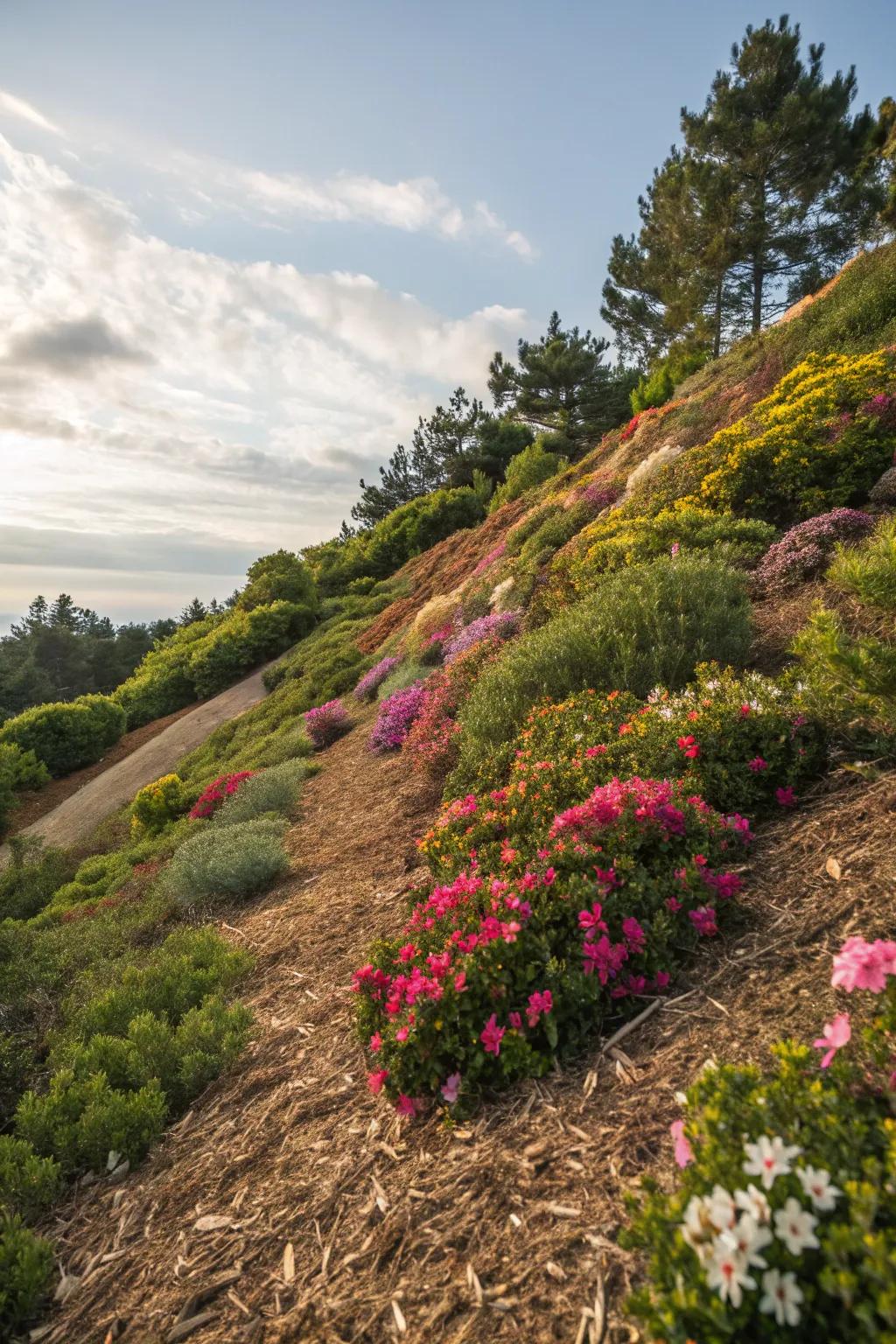
Incorporate flowering plants to add bursts of color and fragrance to your hillside. I’ve found that a mix of perennials and annuals works wonders for a vibrant display.
Useful items to consider:
- Mixed Flowering Perennials Seed Pack: Transform your hillside with colorful, fragrant perennials that bloom year after year.
- Annual Flower Seed Collection: Enhance your landscape annually with vibrant, easy-to-grow flowering plant seeds.
- Organic Fertilizer for Flowering Plants: Boost your hillside blooms with this organic fertilizer for healthier, vibrant plants.
13. Go for a Natural Aesthetic
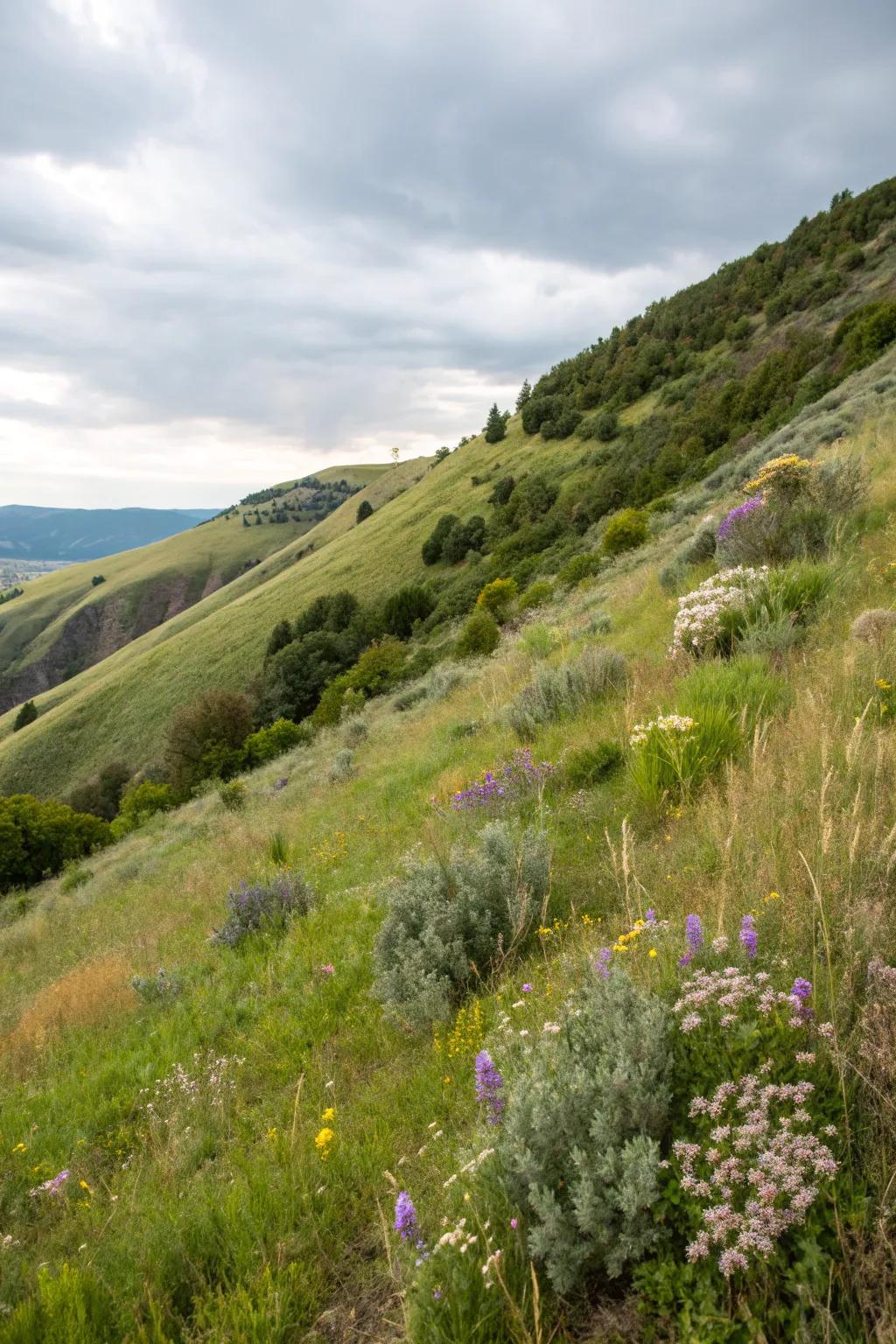
A natural aesthetic can make your hillside feel like a seamless extension of the surrounding environment. Incorporating natural materials and native plants is my go-to strategy for this look.
Possibly handy products:
- Native Wildflower Seed Mix: Enhance your hillside’s beauty with a vibrant wildflower mix perfect for natural landscapes.
- Biodegradable Mulch Mat: Protect your hillside naturally with eco-friendly mulch mats that aid in soil and plant health.
- Natural Stone Edging: Create seamless transitions and boundaries using natural stone edging for a cohesive hillside aesthetic.
14. Lush Greenery for a Full Look
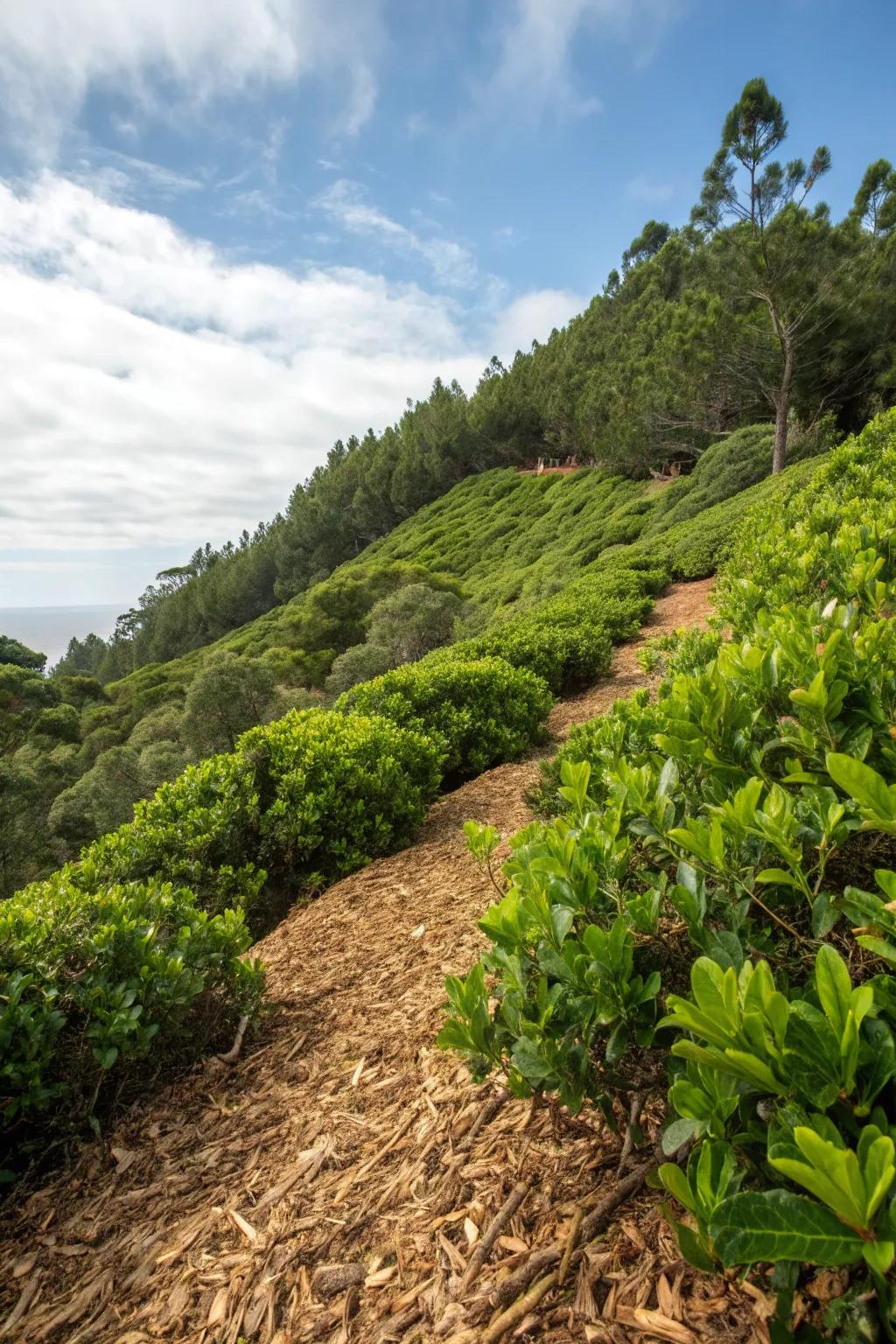
Dense plantings of lush greenery can transform a bare hillside into a verdant retreat. I’ve packed my slopes with a mix of perennials and shrubs for a lush, inviting appearance.
These products might help:
- Evergreen Shrub Mix: Enhance your hillside with vibrant evergreen shrubs for year-round lush greenery and appeal.
- Perennial Flower Seed Pack: Add color to your slopes with low-maintenance perennials that thrive in various conditions.
- Organic Mulch Bedding: Boost soil health and retain moisture with eco-friendly organic mulch for your hillside plantings.
15. Try Vertical Planting
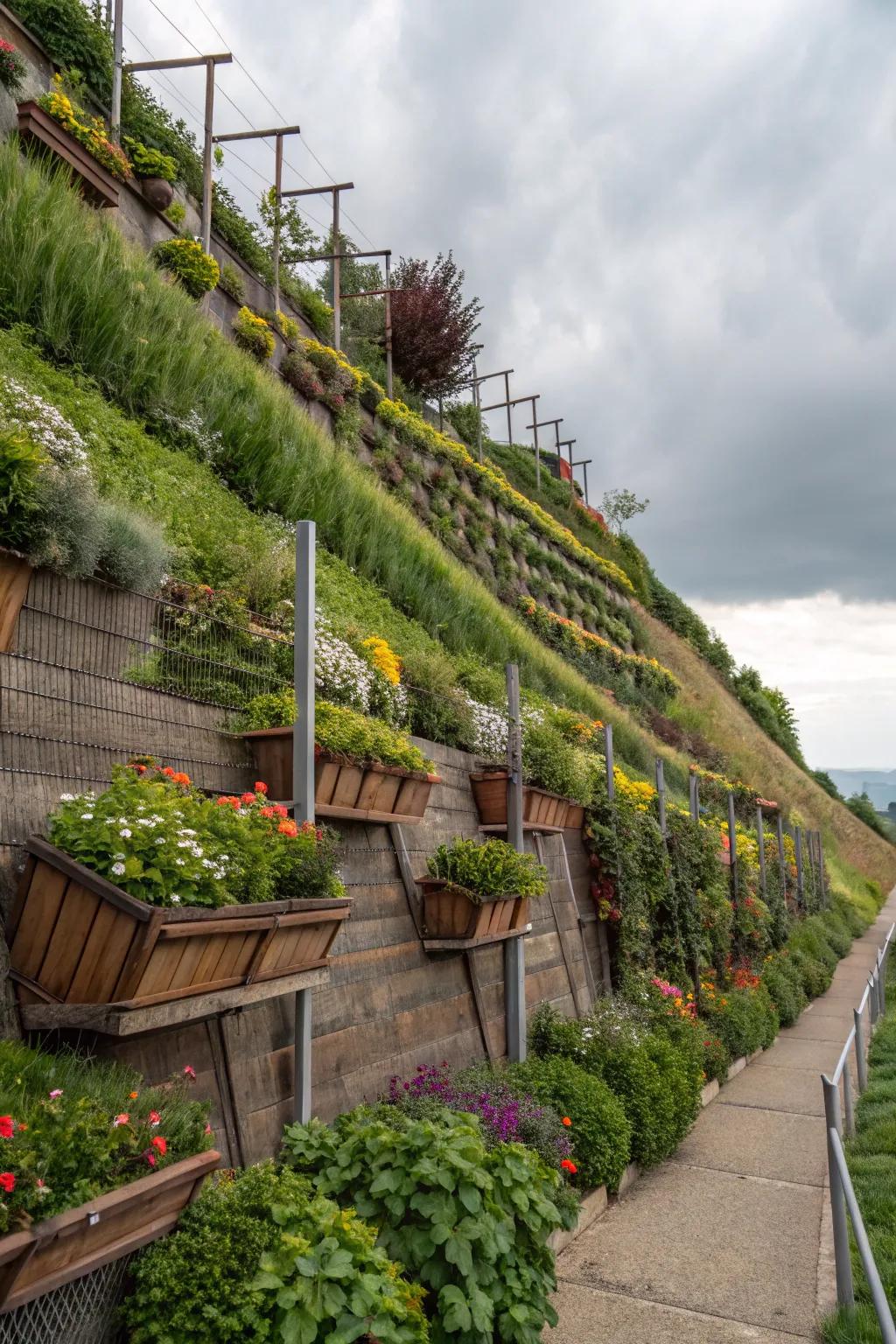
Vertical planting is a clever way to maximize space on a hillside. Hanging planters and trellises can transform a slope into a vertical garden paradise.
A few helpful options:
- Hanging Planters for Vertical Gardens: Elevate your garden’s beauty by installing hanging planters on your hillside today.
- Trellis Panels for Climbing Plants: Transform your slope by supporting vibrant climbing plants with sturdy trellis panels.
- Wall-Mounted Planter Boxes: Create a stunning vertical garden with wall-mounted planter boxes on your hillside.
